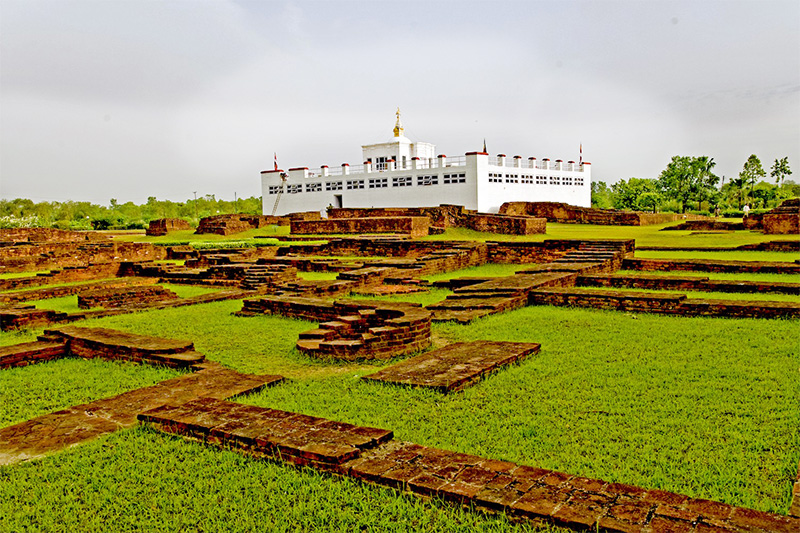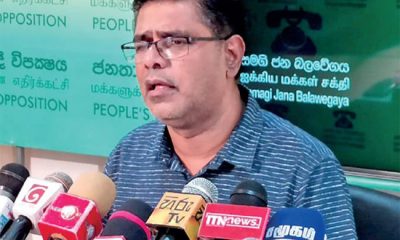Opinion
Perfect rendition of Ed Sheeran hit

Not many local singers do the Ed Sheeran hit song, ‘Perfect.’ Wonder why!
It’s immensely popular, world-wide; in fact, in Britain it has turned out to be a kind of an anthem that even if it’s performed by a busker (street singer), crowds gather and sing along with the busker.
Sri Lankan entertainer Sal Salgado, who is now based in Germany, and has been very much in the news, recently, was asked to do ‘Perfect,’ for a wedding reception, in Heidelberg, Germany.
Sal hadn’t done this song before, but since it was a request, from the wedding couple, he had to oblige, and he had just four days to work on this song.
And…at the end of ‘Perfect,’ he had a whole lot of cheers coming his way from the happy couple, and guests, because he did a perfect job…putting across the song with so much of feeling.
What’s more, the compliments that came his way, on social media, certainly made his day…and his effort, just PERFECT!
Opinion
Fifty years of Portuguese Revolution

by Vinod Moonesinghe
At 10.55 p.m. on the night of 24 April 1974, a disc jockey at a Lisbon radio station played E depois do adeus, by singer Paulo de Carvalho. The song had been the Portuguese entry at the Eurovision song contest that year. Nearly one and a half hours later, at 12.20 a.m. on 25 April, another Lisbon radio station broadcast folk musician Zeca Afonso’s banned song Grandola Vila Morena. The two songs together signalled the start of the “Carnation Revolution.”
Portugal had been under the fascist jackboot for nearly half a century. It had the oldest fascist regime and the oldest colonial empire. The fascist “New State (Novo Estado) banned opposition, including trade unions, and fostered crony capitalism. The dreaded PIDE/DGS suppressed dissent, even resorting to murder. The colonies were milked of their resources, using forced labour, and the population were kept down by an even more brutal police state than existed in Portugal.
However, both the fascist regime and the colonial empire began to unravel in 1961, when India liberated Goa, Daman and Diu in a humiliating defeat for the NATO-integrated Portuguese armed forces. Independence movements in Angola, Cape Verde, Guinea and Mozambique grew in the 1960s, and by the early 1970s all faced full-scale guerrilla wars.
In the face of war, the upper classes abjured military service, and the officers were drawn from the working class, the peasantry and the lower middle class. Mainly Marxist, the guerrillas received support from China and the USSR. In fighting them, the Portuguese troops came upon their political literature, which radicalised its readers. Facing a seemingly unending colonial war, the officers formed the Armed Forces Movement (MFA) and began to plan the overthrow of fascism and imperialism.
The Armed Forces Movement was led by Colonel Vasco Gonçalves, Captain Vasco Lourenço, and Captain Otelo Saraiva de Carvalho. The last-named was undoubtedly the most charismatic, his Goan ancestry contributing to his good looks. He was also the organisational brains behind the practical aspects of the revolution. Also joining them was Captain Salgueiro Maia, who was stationed at the Santarem barracks, not far from Lisbon.
In the early hours of 25 April, following the song-signals from the radio stations, the MFA mobilised its supporters among the troops and set off to occupy strategic points, such as radio and television stations, Lisbon Airport and army regional headquarters and barracks. At 4.20 a.m. the MFA’s first broadcast went out over the airwaves.
Meanwhile, Captain Maia took over the Santarem barracks and addressed the soldiers, who joined the revolution enthusiastically. Taking a large force with him, he set off to capture the “government quarter” of Lisbon, arriving at 6 a.m. Facing troops loyal to the regime, he persuaded the to join him. An attempt to bombard his troops from naval vessels in the harbour failed when the sailors mutinied. His troops surrounded the barracks in which the government ministers had taken refuge and persuaded them to surrender. It had been a nearly bloodless revolution, the only dead being four civilians killed by the PIDE/DGS who fired on demonstrators outside their headquarters.
The MFA had requested civilians to stay away from the streets, but the people poured out to demonstrate in favour of the revolution and to fraternise with the troops. Soldiers put red carnations from the flower market into their rifle barrels to show their peaceful intent, and the flower became the symbol of the revolution.
A Junta of National Salvation, headed by General Antonio de Spinola took power. The MFA announced its aims as “democratisation, de-colonisation and development.” The masses became radicalised and supported anti-fascist reforms on the streets. A Alarmed by the rapid left-ward movement of the revolution, Spinola and other like-minded officers attempted coups, which were stopped by the forces headed by Carvalho with support from the streets. A Revolutionary Council replaced the Junta. Spinola fled to Brazil and began underground terrorist attacks on Portugal.
Meanwhile, the decolonisation programme went ahead swiftly, and Cape Verde, Guinea Bissau, Mozambique and Angola achieved independence – although the last two faced civil wars due to intervention from Apartheid South Africa, backed by the USA.
However, the Portuguese Revolution remained incomplete, as “moderate” forces took over, replacing the radical leaders of the MFA. The constitutional commitment to socialism disappeared and reforms carried out earlier were rolled back. Carvalho was imprisoned on trumped up charges. Although parliamentary democracy prevailed, Portugal failed to develop as an egalitarian society.
A few days ago, Vasco Lourenço addressed a meeting of the 25 April Association in Lisbon. He said that he was proud that he helped make Portuguese society fairer.
The Carnation revolution set in motion the demolition of fascism in Greece and in neighbouring Spain; and the independence of Angola and Mozambique made easier the fight against Apartheid. However, part of the achievement of 25 April has been lost:
“… 98% of wealth is in the hands of 1% of the population. This has to provoke indignation. What I called at one point: there is going to have to be a new Carnation Revolution. In other words, society can’t be as unequal as that.”
Opinion
The Fox Hill tragedy: Lessons to be learnt

BY Dr B.J.C.Perera
Specialist Consultant Paediatrician and Honorary Senior Fellow, Postgraduate Institute of Medicine, University of Colombo, Sri Lanka.
It was indeed a catastrophe of epic proportions that occurred at the Fox Hill Supercross 2024 car racing event on 21 April 2024 in Diyathalawa. There were fatalities amongst the onlookers as well as some of the track staff and major injuries sustained by the spectators when a couple of cars went completely out of control at high speed. Seven died including a child and four Flag Marshals. There were 23 people injured, some quite severely. They were evacuated to the Diyatalawa Hospital. There probably were many contributory factors including poor visibility due to clouds of dust being made to spring up by the speeding cars. What we saw over the television screens were images of a kind of carnage that caused unbelievable chaos in the racing track itself, as well as the surrounding spectator areas. To compound matters further there was no worthwhile emergency response efforts and medical backup when the calamity occurred and some of the injured were carried away from the scene by other spectators in a most unsatisfactory and potentially harmful manner. It is generally not well appreciated that improper carrying of the injured can do more harm than good in such instances. People with neck and spinal injuries could be maimed and paralysed for life by such inappropriate transport of the afflicted.
All sporting events, especially those involving high-speed activities like car races, are exhilarating spectacles that draw crowds from far and wide. However, amidst the excitement, the thrills and even the spills, ensuring the safety of competitors as well as the spectators remains paramount. From the competitors pushing the limits to the spectators cheering them on, every individual involved must be safeguarded against potential risks. To achieve this, a meticulous approach to safety measures, including trained medical backup and comprehensive planning, is absolutely necessary. This author decided to write this piece as a sports person, in addition to having an abiding interest in Sport and Exercise Medicine.
Before delving into the necessary and mandatory arrangements that are required in such sporting scenarios, it is crucial to comprehend the inherent risks associated with sporting events, especially those involving high-speed vehicles. Car races, for instance, entail the potential for accidents resulting in injuries to drivers, pit crew members, track staff, and of course, even the spectators. The high velocities at which vehicles operate amplifies the severity of these risks. At the Fox Hill fiasco, there were many problems caused by well-meaning yet untrained individuals who even rushed to the aid of the afflicted with scant respect for their own safety with cars whizzing around at high speed.
At the outset, the absolutely essential availability and the role of trained medical backup teams should be stressed without any reservations whatsoever. All sporting events, particularly those involving motor racing, necessitate the presence of on-site medical teams, not just one but several, adequately equipped to handle various medical emergencies swiftly and effectively. These teams typically include paramedics, emergency physicians, and nurses trained in trauma care. In addition, establishing medical facilities within the vicinity of the event is vital. These facilities should be equipped with advanced medical equipment, including defibrillators, ventilators, and trauma kits, to provide immediate medical attention in case of accidents.
Seamless communication and coordination among medical personnel, event organisers, and local emergency services are imperative. This ensures that response times are minimised, and patients receive timely medical care. Nothing can be done usefully in the spur of the moment and in that sense conducting pre-event briefings and emergency response drills to familiarise the medical personnel with the event layout and potential scenarios they may encounter. This preparation enhances their readiness to tackle emergencies efficiently and ever so promptly.
There are accompanying infrastructure necessities like implementing track safety enhancements, such as impact-absorbing barriers, runoff areas, and improved fencing, which minimises the risk of serious accidents and mitigates their consequences.
Ensuring the safety of spectators is equally critical. Erecting sturdy barriers and grandstands at safe distances from the track reduces the likelihood of injuries in the event of an accident. Given the risk of fire in motor racing accidents, installing fire suppression systems along the track and in pit areas is essential. Additionally, providing fire-resistant clothing for competitors and pit crew members enhances their safety.
Enforcing stringent vehicle safety regulations, including mandatory safety features such as roll cages, fire extinguishing systems, and driver restraints, is imperative to minimise the risk of injuries to drivers. Conducting thorough risk assessments before the event enables organisers to identify potential hazards and develop effective mitigation strategies. Establishing clear emergency response protocols ensures a coordinated and efficient response to medical emergencies. These protocols should outline roles and responsibilities, communication channels, and evacuation procedures. Having well-defined evacuation procedures in place, including designated evacuation routes and assembly points, facilitates the safe and orderly evacuation of spectators and personnel in the event of an emergency. Access to medical evacuation resources, such as air ambulances and ground transport services, and four-wheel ambulances, is crucial for swiftly transporting critically injured individuals to advanced medical facilities for specialised care.
Conducting post-event debriefings allows organisers to assess the effectiveness of safety measures and emergency response protocols. Lessons learned from each event should be used to refine safety procedures for future events. Regular training sessions for medical personnel, event staff, and volunteers help to keep them abreast of the latest safety protocols and procedures. Additionally, providing education on injury prevention and first aid equips individuals with the skills necessary to respond effectively to emergencies. Embracing technological innovations, such as real-time monitoring systems and predictive analytics, can enhance safety by identifying potential hazards and enabling proactive risk mitigation measures.
As is evident from the above determinants, assuring safety in such events is a huge, HUGE, endeavour. All components of the initiative should work like a well-oiled machine to provide the best benefits to the people in need of medical assistance. Given the above-listed requirements, it is always useful to look back over the shoulder to see up to what kind of level the Fox Hill Race complied with them.
A core responsibility of any government is to ensure the safety of people and create conditions to promote the well-being of individuals and communities. The tragedy in Diyathalawa resulted in loss of life, distress, and disabilities to individuals, families, and communities, apart from a considerable loss of material resources including money, due to damage to property, compensation, and other expenses. It looks as if the powers-that-be have not been able to foresee and plan this event accordingly, which unfortunately led to this tragedy.
Has the government taken adequate steps to meet its responsibilities and duties to society and how did it do it? The entire event should be the result of adequate planning and practice by government agencies and private sector stakeholders which supported the event. Important questions need to be asked as to how approval was secured from the controlling authorities to stage this event. Did the government approve of the conduct of this event? Who approved it and were the criteria for safety fulfilled? It has been said that planning and executing the event was undertaken by the Sri Lanka Army in collaboration with the Automobile Association of Sri Lanka. One may be forgiven if one asks whether they had the adequate capacity to plan and execute such an important event.
Making the race track involves levelling off the ground, cutting trees, and ensuring proper drainage and landslide controls. Was there consultation with the Forest Department, Geological Surveys carried out, Water Resources Board consulted and the environment agencies tapped to prevent any possible disasters, short term, and long term?
One has also to ask whether the racing track was suitably laid out for an event of this nature. We saw a large amount of dust interfering with the vision of drivers. Who approved the track as suitable for such a race? Were the drivers and vehicles competent and technically sound to participate in such a race? We have now been told that some of the vehicles were not even registered with the Registrar of Motor Vehicles.
Had adequate steps been taken by the organisers to ensure the safety of all spectators by erecting barriers, having proper policing, training race officials, and ensuring communication methods to indicate danger? Did the organisations take all necessary steps to ensure there would be emergency services available in collaboration with the fire brigade, ambulance services and health authorities?
It would be to the benefit of all concerned if an independent fact-finding inquiry to ascertain the answers to the above is held urgently. Any recommendations resulting thereof should be implemented promptly for the benefit of our people. It will not be a witch-hunt but a progressive step in the right direction for the betterment of future generations.
Safety at sporting events, particularly those involving high-speed activities like car races, demands a multi-faceted approach encompassing trained medical backup, infrastructure enhancements, comprehensive emergency response plans, and continuous improvement initiatives. By prioritising safety and implementing robust measures to mitigate risks, organisers can ensure that both competitors and spectators can enjoy the excitement of sporting events with peace of mind. However, it is of the utmost importance to recognise that safety is an ongoing endeavour that requires vigilance, adaptability, and a commitment to excellence in every aspect of event management.
It was the iconic President of the USA of the distant past, Abraham Lincoln, who said, “Matters of war are too, serious, to be left in the hands of Generals”. It was heard over the grapevine that a wag had opined that “responsibility issues and legal matters are too, serious. to be left solely in the hands of certain types of powers-that-be.”
Opinion
Rediscovering Lumbini: Birth place of Prince Siduhath – Part II

by Geewananda Gunawardana,
Ph.D.
Part one of this article appeared yesterday (22 April 2024)
The border area between Nepal and India known as the Tarai was a no-man’s land, particularly avoided by
Europeans due to risk of catching ‘Tarai fever,’ and only frequented by a few aboriginal people and hunting parties. On a hunting trip, Nepali official, Major Jaskaran Singh was told about a stone pillar near the village of Nigliva by the locals, and upon inspection he found an inscription on it. When the Nepali government asked for assistance to investigate it, Dr Lawrence Waddell instructed Dr Alois Fuhrer to assist them. Fuhrer made a rubbing of the inscription and sent it to his mentor in Germany for a translation. Waddell kept asking Fuhrer for a report but never got a response, until he saw a publication in a European journal three years later. The inscription identified the monument as the stupa of Buddha Konakamana, but Fuhrer failed to recognise its significance. Waddell knew this as the place near Kapilavastu mentioned in Chinese records, and using it as a reference, he estimated the location of Lumbini. However, Waddell failed to get government attention, and ended up publishing his findings in a Calcutta newspaper.
This publication received widespread attention, and the Bengali government finally allocated limited funds, obtained Nepali government authorisation, and assigned Fuhrer to carry out the field work. Not only did Fuhrer fail to find Lumbini, but he also ended up committing another major forgery.
In the year 1885, a local property owner, Duncan Rikketts, informed Vincent Smith, the city judge of Gorakhpur at the time, of a pillar found in his property near the village of Rummindei. Both Waddell and Smith had known about the inscription on this pillar, but the newfound evidence prompted Waddell to ask a British resident in Kathmandu to alert the Nepali team assigned to help find Lumbini. This prompted General Khadga Shamshar Jang Rana to take his team to the site and start excavations in the presence of Duncan Rikketts. The excavation uncovered a pillar 24ft high standing on a masonry platform bearing an inscription. According to Smith/Rikketts reports, Fuhrer arrived after the inscription was uncovered and made a copy. The inscription in Asokan Brahmi read:
King Piyadasi, beloved of the Devas, when anointed twenty years, came to this spot, and worshiped, saying, ‘Here was Sakyamuni born,’ and caused a stone pillar to be erected testifying ‘Here in the Lummini village was the Honourable One born.’
This could have been the final proof for the location of this all-important site, and an occasion for celebration. However, the unfortunate involvement of the unscrupulous figure Fuhrer cast doubt in some scholars’ minds about the authenticity of the inscription. Seeing the pristine condition of the inscription, and knowing Fuhrer’s reputation, some even suggested that Fuhrer may have carved the inscription himself. Others argue that he did not have sufficient in-depth knowledge of Brahmi script to accomplish that feat. Five months later, a life-size bas-relief depicting Queen Maya giving birth was found in a nearby Hindu temple providing credence to the identity of the place. Clearly, Fuhrer did not have any stone carving skills.
No further exploration or restoration took place at Lumbini for another half a century. The access to foreigners was restricted by Nepali rulers, but a German Indologist named Ernst Waldschmidt secretly visited the place in 1933. He described the place as neglected and overgrown with scattered excavations – the remnants of Sir Kaiser Shumsher’s work in 1939, and a crude but well-kept shrine built with old materials sheltering the bas-relief of the ‘nativity scene.’ In 1952, after a change in the Nepalese government, Giuseppe Tucci, a Western scholar, was allowed to visit the site. There was no proper road leading to the site and he had to ride an elephant. The site had been cleared and fields were growing in the surrounding area. He observed that the Asokan Pillar was split down the middle, likely due to a lightning strike.
Things changed in 1955 while preparing for the 2500th anniversary of the birth of Buddha the following year. King Mahendra, at the behest of Indian Prime Minister Nehru, made many improvements to public facilities, and became the first ever Nepalese king to visit Lumbini. Mahabodhi Society and the Newar community guided by Venerable Dhammaloka Mahathero, facilitated the development of Lumbini as a Buddhist pilgrimage site. This effort was continued by Aniruddha Mahathero, who studied at the Vidyalankara Pirivena and became fluent in many languages, by bringing alone Buddhists from other countries, especially from Tibet and Japan. Waldschmidt visited the site again in 1958, the same year that the Gautam Buddh Airport was opened in neighboring Siddharthanagar, formerly Bhairahawa. He described the place as barren and ordinary, without a trace of the beautiful grove of sal trees (Shorea robusta) described in the texts and was concerned about the way the antiquities were overlooked during the development work.
In 1967, U Thant, a Buddhist himself and the secretary general of the UN, visited the site. He was distressed by the desolate nature of the place and set up a UN committee to turn Lumbini into an international centre for peace. In 1968, UNESCO and UNDP got involved with restoration and development work and hired the Japanese architect, Kenzo Tange, famous for designing the Hiroshima Peace Memorial Museum to draw up plans. Lumbini was listed as a UNESCO World Heritage site in 1997.
Concerned with the impact of increased tourist and pilgrim visits and shortsighted restoration work on the antiquities, Nepal government and UNESCO jointly developed a three-year master plan to preserve and protect antiquities from future developments. This was supported by the Japanese Funds-in-Trust for UNESCO led by Professor Yukio Nishimura of Tokyo University. A team directed by Robin Coningham and Kosh Prasad Acharya was assigned to do the work.
It is well known that sites of religious importance were continuously restored and maintained by the devotees or rulers throughout history. Emperor Asoka had undertaken a massive project to restore all known Buddhist sites throughout India during his reign from 274 to 232 BCE. In modern archaeological excavations, Asoka’s constructions are considered as a landmark referred to as the Mauryan Horizon. In general, excavations would continue through post-Asokan construction layers, but would not go beyond the Mauryan Horizon as inscriptions uncovered provided definite information of the site’s history. However, in the case of Lumbini, a consensus was reached among all parties involved that excavation work may continue beyond this limit.
As expected, the archaeologists discovered several layers of construction beneath the Asokan brick foundation, the Mauryan Horizon. It became apparent that all older structures were built surrounding an empty space that was free of construction or debris. Beneath several layers of brick work, consisting of cardinally oriented curbs and platforms built around an irregular ‘Marker Stone’, they encountered the evidence of a wooden structure, and roof tiles. Based on sculptural depictions found at Bharhut, Sanchi, Bodh Gaya, Mathura, and Amravati, the archaeologist determined that what they were uncovering was the remnants of a wooden structure built around a living tree, referred to as bodhigara. Evidence for such structures were found in Sri Lanka as well, and Robert Knox had described them in his book, An Historical Relation of the Island Ceylon. In the empty space surrounded by these structures was found evidence for the presence of a tree at some point in the past.
The layer containing the potholes of the wooden structure dated to the 6th century BCE when analysed using carbon-14 and optically stimulated luminescence (OSL) techniques. This finding has significant implications on a long-standing scholarly debate: Even though the Theravada tradition stands firmly that the Parinirvana occurred in 543 BCE, the texts provide contradictory dates for it. Emperor Asoka’s consecration in the year 268 or 267 BCE is the reference point used by all documents and historians. Deepavamsa places Asoka consecration 118 years after Parinirvana whereas Atthasalini records it as 218 years. The Chinese version of Samantapasadika also places it or 118 years after it, but the Chinese “dotted record” tradition tabulates it to be 218 years. On the other hand, all Sanskrit documents place it 100 years after Parinirvana. Therefore, two chronologies -long and short – can be attested to this event based on texts. The significance of the scientific dating of the wooden structure to 6th century BCE is that it gives credence to the long chronology favoring the Theravada tradition that Prince Siduhath was born in the year 623 BCE.
The excavation by Coningham and Acharya allows for the reconstruction of the history of this most important Buddhist site. The strip of land south of the lower Himalayas spreading between Yamuna on the west and Brahmaputra River on the east is known as the Terai region, meaning the moist land. The dominant tree of the forest is the sal tree (Shorea robusta). This is not the cannon ball tree (Couroupita guianensis) that is ubiquitously found in Sri Lankan temple murals depicting the birth of Prince Siduhath. The excavation found evidence for agricultural activity around the site before the wooden structure was built. There may have been settlements or towns, and perhaps roads or trade routes connecting Kapilavastu and Devdaha. This may be the reason for Maya Devi and her entourage to take a longer Southern route to Devdaha from Kapilavastu instead of a shorter northern route. Perhaps, the marker stone was placed on the spot shortly after the event, and the wooden structure was built around the tree after the enlightenment, or the Parinirvana. By the time Emperor Asoka visited, the wooden structure may have disappeared, leaving only the marker stone. No wonder that Asoka broke down in tears, just as U Thant did two millennia later, upon seeing the site.
References: R. E. A. Coningham, Antiquity 87 (2013): 1104–1123; Charles Allen, The Search for the Buddha (2002); Etienne Lamotte, History of Indian Buddhism (1988); David Jackson, Eds. F.-K. Ehrhard and Petra Maurer (2013) Nepalica-Tibetica, vol. 1, pp. 295-314.
-

 Business6 days ago
Business6 days agoCEAT Kelani launches three new radial tyre variants in ‘Orion Brawo’ range
-

 Business5 days ago
Business5 days agoCeyline Travels and MBA Alumni Association of University of Colombo sign MOU
-

 Business6 days ago
Business6 days agoHayleys Fabric celebrates triple triumph at ISPO Textrends Spring/Summer 2026
-

 Business3 days ago
Business3 days agoTelin and Dialog Axiata ink strategic partnership to manage international voice and SMS termination
-

 Business7 days ago
Business7 days agoUrgent appeal from Sri Lankan exporters on rupee appreciation
-

 Business5 days ago
Business5 days agoMaldivian to launch direct flights to Colombo
-

 Sports6 days ago
Sports6 days agoHello Madras, ‘ai api kaluda?’
-

 News4 days ago
News4 days agoSJB demands to know who occupied rooms 616 and 623 while Zahran was on 6th floor





























